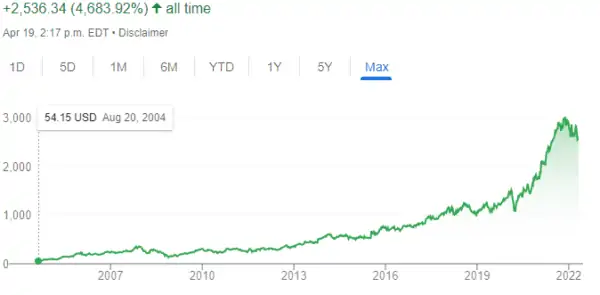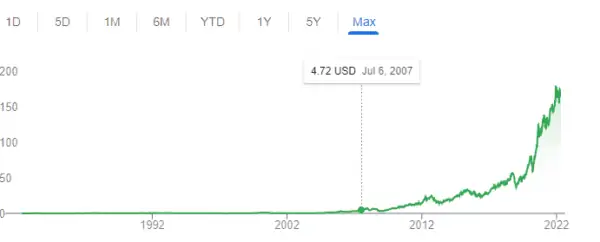Later this year I’ll turn 40. I have never considered being 40 as old or the start of a midlife crisis. For me, 40 is just another number, the important thing is that I still feel young at heart.
It’s also hard to believe that I have been in the corporate world for almost 16 years. When I graduated from university back in 2006 and entered the workforce that year, I felt that I was starting a new chapter of my life.
Looking back to this important time of my life today, there are many things I wish I could have done differently. If I had, I would be so much better off financially today. Having said that, there are also many things I’ve done quite well that set me up well financially to where I am today.
If I could go back in time, here are 10 lessons I would give to my 23-year-old self.
1. Stop Buying DVDs
I watched a lot of movies in my 20s. Whenever I watched a great movie, I found myself having a huge desire to own the DVD so I could watch the movie again. It became a fascination to have a great DVD collection. I’d often go to Future Shop or other stores to buy the latest movie DVDs, or DVDs that were on sale. Due to this “addiction”, I’ve spent quite a bit of money on DVDs.
Looking back, it was very silly to have spent all that money on DVDs, especially considering I don’t even have a device that can play DVDs. We don’t own a TV at home, let alone a DVD player. Furthermore, DVDs aren’t even the “thing” anymore, since online streaming services like Netflix and Disney+ have taken over.
Today I still have a box full of DVDs sitting in one of the closets at home. So much for my awesome DVD library…
2. Quit listening to hot tips
When I first started investing in stocks, I would listen to hot tips and try to make a quick buck or two.
I sure got burned by these hot tips!
Thanks to these hot tips, I purchased my fair shares of penny stocks, I also did a number of day trades (and short-term trades). More often than not, I would end up on the losing end of the spectrum.
For example, one time I decided to day-trade Ballard (BLP.TO) based on a hot tip. The stock had been going up for a couple of days straight. Based on momentum charts, things looked good. Everything indicated that the stock would continue to climb.
The stock was hot due to some new contracts that the company had just won and there were more contracts to be won in the pipeline. So I pulled the buy trigger for a couple of thousand dollars in my RRSP account.
As luck would have it, as soon as I purchased the stock, the share price started dropping like a stone. The stock price went from bright green (up) to bright red (down) in a matter of minutes. Frustrated and a bit nervous, I decided to set a stop limit to avoid the stock gaping down and ending up with a big loss. The stop limit was triggered about 10 minutes after my share purchase and I lost about 15%.
Yes, I have won big a few times with hot tips. But most of the time I lost money on hot tips…
3. Avoid high fee mutual funds
Although I started investing early in my early 20s, I was buying mutual funds that bank financial advisers were recommending. I knew that minimizing Management Expense Ratio (MER) was a good idea but I’d often get persuaded by these “financial advisers” to go with actively managed funds. Simply because these funds had better historical returns. Unfortunately, the actively managed funds also happened to have much higher MERs than mutual funds that tracked the different indexes.
For some odd reason, I kept repeating this mistake again and again, even after reading books like A Random Walk Down Wall Street. I was not willing to do my homework and take charge of my own finance.
Instead, I wanted someone to look after my money and manage it for me so I didn’t have to. Simply put, I was lazy. Not taking any responsibility meant I was paying extra fees on these actively managed funds.
What I should have done instead, is to invest my money in dividend growth stocks or simply invest in index ETFs. If I had purchased dividend stocks like Royal Bank, Disney, TD, and Johnson & Johnson over 15 years ago, I’d be sitting at a very comfortable yield on cost for these stocks, collecting great dividend payouts every quarter. Likewise, index ETFs have much lower MER than most mutual funds. Even a small 0.5% difference in fee can make a HUGE difference in the long term.
If I were 23 years old today, I’d forget about mutual funds and simply invest my money in one of the all equity ETFs.
4. Take advantage of the economic downturn
When I entered the workforce after graduating from university in 2006, life was good. I was making more money than I ever had before. Since I had money left over each month, I decided to start investing money in the stock market by purchasing mutual funds.
Then the financial crisis hit. As a result of the financial crisis, the stock market stumbled too. Since I had some spare cash lying around, I thought I’d take advantage of the down market by buying some top Canadian dividend stocks. One of the stocks I purchased was Royal Bank (RY.TO).
I purchased Royal Bank at a heavily discounted price. My original plan was that I’d wait for the market to recover.
In case you’re wondering, I bought 100 shares of Royal Bank at $26.92 on Feb 26, 2009. I thought I purchased at an all-time low.
The stock recovered a bit in early March but then the market started dropping again. Panicked, I decided to sell all 100 shares on March 3 at $29.05 to take in a small profit. I thought I was a genius.
Little did I know that the stock price would continue to climb after my sale.
Today, Royal Bank’s share price had increased more than five times if I had kept these 100 shares. I would have also received a nice amount of dividends since 2009. At the current dividend payout of $1.20 per share, that means my cost on yield would have been a jaw-dropping 17.8%!
Oops, talk about losing a golden opportunity!
Looking back, I definitely wish that I had held onto Royal Bank and used all the cash I had available to buy all the big 5 Canadian bank stocks during the financial crisis, instead of holding cash in GIC and fearing what was happening in the stock market.
What I failed to realize is that the likes of Royal Bank, The Bank of Montreal, CIBC, The Bank of Nova Scotia and TD all have been paying uninterrupted dividends since the late 1800s! If I had done some research and looked at the big picture, it was easy to the financial crisis was a golden opportunity to load up on solid dividend stocks!
Fortunately, I learned from this mistake and decided to take full advantage of the COVID-caused-market-melt-down in 2020.
5. Be patient
As I showed above with my Royal Bank trade, if I had been patient, I would be doing very well today. But I was young and impatient. I was looking for the quick buck and the excitement of big stock gains in a very short period of time. Thanks to my impatience, I had gotten out of many trades way too early, losing either huge gains, or huge amount of dividends.
Here’s another example. A long time ago, I used to watch Business News Network (BNN) regularly. I’d base my purchase on picks of the day (see lesson #2 above). One of the stocks that caught my attention was WI-LAN Inc.
The stock picker suggested that the stock was undervalued. After some quick analysis, I decided to purchase some shares at $1.70. After less than a month, the stock price was bouncing all over the place. My patient ran short so I sold all my shares at $1.98.
If I had waited for a year, the price would have doubled. If I had simply waited for 2 years before selling the stock, I would have made a 6 bagger on this stock.
Be patient, my 23-year-old self.
6. Listen to my intuition
I recalled using Google in the 90s and thought the search engine was a million times better than Yahoo and other search engines around. I thought to myself, if Google were to go public one day, I should purchase some shares and hold forever. I thought Google had some excellent potential.
Similarly, when Apple first announced the original iPhone, I thought the phone was very cool but didn’t think too much about it. About a month after the launch, a co-worker showed me his iPhone. After playing around for a little bit, I thought the phone was revolutionary. I even talked to my co-worker about purchasing some Apple stocks because the iPhone would totally take over the smartphone market.
Instead of listening to my intuition and purchasing shares of Google and Apple, I didn’t go through with it. I did eventually purchase Google and Apple stocks but it wasn’t until many years later. Talk about missed opportunities.
Just for fun, let’s look at the historical chart for Google.
And here’s what the Apple historical stock chart looked like.
7. Say yes to free money
If work has RRSP matching, take advantage of it. It’s essentially free money from your employer. It amazes me how many people don’t take advantage of this great benefit.
Likewise, if work has an employee stock purchasing plan and is matching cash contribution to a certain percentage, get on top of it!
Always say yes to free money!
8. Maximize RRSP and TFSA
One thing that I’m very glad that I’ve done since started working is to always maximize my RRSP and TFSA contribution room every single year. Tax-sheltered & tax free accounts are efficient ways to reduce your income tax. Best of all, your investments can compound tax-deferred or tax-free for many years.
It is also important to stop using TFSA as a savings account, and use it for retirement instead!
Whatever you do, do not “invest” in GICs or term deposits in your RRSP or TFSA. Why? Well, the interest rates nowadays are terrible. So terrible you’re essentially losing purchasing power by putting money in GICs/term deposits because inflation rates will diminish your actual purchase power.
9. Maximize savings rate
When you’re single and young, it’s a lot easier to save money every month. So when you just enter the corporate world and start earning money full time, aim to maximize your savings rate each month. Aiming for a 50% savings rate is good but 80% or higher is even better. It sure is a lot more challenging to have a savings rate in the above 80% range when you have a family and have dependents.
When I started working, I kept an excel sheet to track my income and expenses. Although I wasn’t specifically tracking my savings rate, I was trying to keep an eye on my expenses.
I recently went through this excel sheet and calculated my savings rate. Below is a 3-year snapshot of my savings rate after started working. A bit of explaining first, for about 1.5 years I moved back with my parents paying no rent. When I finally moved out again to live with a flatmate, my expenses increased.
Back then all I was doing was tracking my income vs. expenses. I didn’t know anything about maximizing my savings rate. I was still living like a poor student. As you can see, my savings rate was pretty decent without me even trying.
I could probably have paid more attention to maximizing my savings rate in my 20s. This could be done by simply partying less and investing my money in index ETFs or dividend stocks.
10. Stop caring about what others think of you – be yourself
This is probably the most important lesson. Stop caring about what others think of you.
Stop feeling that you need to impress people by wearing brand-name clothes, having expensive jewelry, driving expensive cars, or having the latest electronic gadgets. If people are friends with you because you have these expensive, latest toys, they shouldn’t really be considered friends.
You want to be friends with people that care about who you are and your values. Stop second-guessing what people think about you behind your back. You can’t control how others feel about you, so the only thing you can do is to do things that will result in happiness for yourself and yourself alone.
Be yourself and be comfortable about the decisions you make in your life. You’ll make some good decisions, you’ll make some bad decisions. That is life. Don’t base your important life decisions on what other people might think or say about you.
Take charge of your own life. Don’t make decisions based on what others would think about you.
Dear readers, do you have any lessons you’d give to your 23-year-old self?





